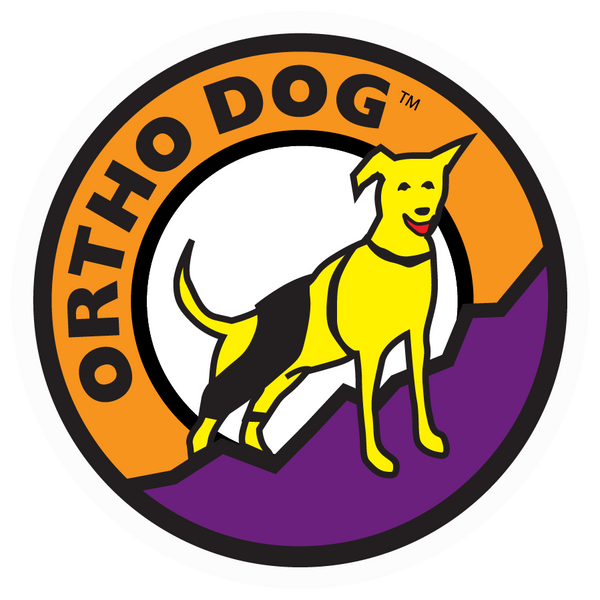Characterized by their regal stance, drooping jowls, endearing underbite, and squashed face, boxer dogs are beloved, protective members of the family. As with any of our pets, it can be painful to watch an energetic dog begin limping with rear leg pain or show other signs of discomfort.

Boxers are prone to canine hip dysplasia (CHD), a malformation of the ball and joint socket of the hip. Instead of sliding smoothly and creating fluid motion, the ball (head of the femur) and hip socket (in the pelvis) don’t fit perfectly together. With this “loose hip,” the ball can grate on the socket resulting in painful bone spurs that can cause pain in the hip joint, lameness, or even degenerative joint disease.
Dog hip braces may also slow the progression of this chronic issue and can provide support for improved mobility. Ortho Dog’s Hip Hound brace has already helped many boxers get back that pep in their step.
Signs of Boxer Hip Dysplasia
Hip dysplasia has a range of signs, depending on the severity of the disease and degree of looseness in the joint.
Symptoms can include:
- A “bunny hop” gait
- Limping
- Lameness in the hind legs
- Decreased range of motion
When your boxer has trouble navigating stairs, sitting down and getting back up again, or you notice your boxer's hind legs giving out, it may be a sign of hip dysplasia. Your veterinarian can diagnose this disease after a complete physical exam with X-rays of the hips and pelvis.
While scientists continue to research the genetics of this disease, knowing your boxer’s genetic history may help you determine if your pup is more prone to developing the disease. Boxers can be born with hip dysplasia, although their hips may appear perfectly normal. Your boxer puppy with hip dysplasia may not show symptoms for six months or a few years. If you notice your boxer puppies limping or having back leg pain, it’s a good idea to get your puppy checked out as soon as possible. Older dogs may develop hip dysplasia from deterioration of the hip bone and cartilage. The earlier the diagnosis, the sooner the boxer puppy can begin treatment and return to pain-free play time.

Hip Dysplasia Treatment Options
If invasive surgery is not the best choice for your dog, look into non-surgical, conservative management options, such as physical therapy, weight control, acupuncture, anti-inflammatories, and massage therapy. A hip brace can also help with joint stability and mobility.
Other Common Boxer Leg & Hip Issues
Talk to your vet about the following common boxer breed medical problems that may be affecting your pup:
Arthritis
Arthritis is one of the most common health problems boxer dogs experience. Symptoms of arthritis are similar to symptoms of hip dysplasia. In fact, arthritis may develop as a result of existing conditions like hip dysplasia. A brace can also provide support for arthritis. Discuss options with your vet.
Torn ACL / CCL
Known in humans as the anterior cruciate ligament (ACL), the cranial cruciate ligament (CCL) in canines connects the femur (bone above the knee) to the tibia (bone below the knee). When a dog gets a torn or partially torn CCL, you’ll notice signs such as limping or lameness (similar to the signs of hip dysplasia). The dog will begin favoring the non-injured leg and it may appear to be boxer hip pain, although the issue is in the CCL. Often, surgery is the recommended treatment. But if your boxer is not a candidate for surgery, a brace, such as the Ortho Dog Cruciate Care Dog Knee Brace can help stabilize the knee by limiting flexion and extension so that scar tissue can form a callus over the tear for healing.
Degenerative Myelopathy
A progressive disease of the spinal cord typically seen in dogs between 8 and 14 years old, degenerative myelopathy in boxers can result in hind-end paralysis. As with hip dysplasia, there is no cure for this disease, although there are treatment options that can increase the dog’s quality of life. Learn more about Degenerative Myelopathy.
Bone Cancer (Osteosarcoma)
Signs of bone cancer in boxers can include lameness and joint pain, as well as fatigue and a mass growth. As with hip dysplasia, an X-ray by a certified veterinarian can help diagnose this disease.




